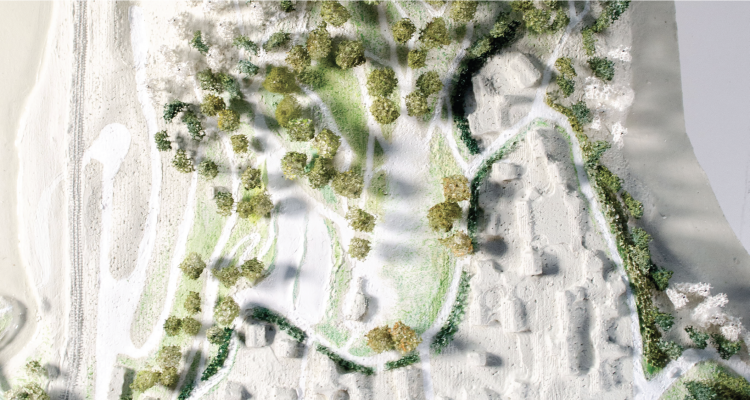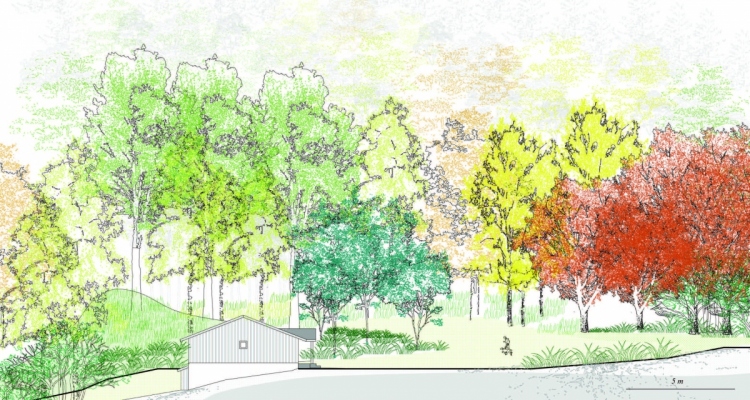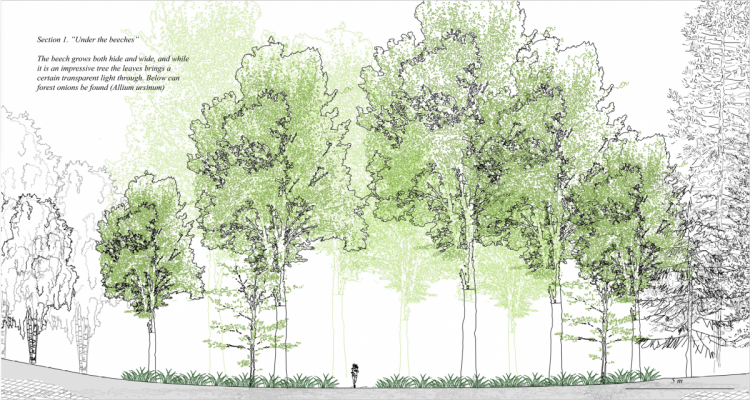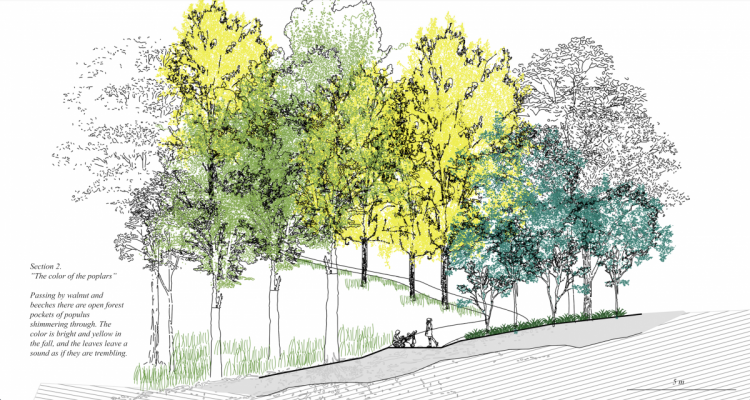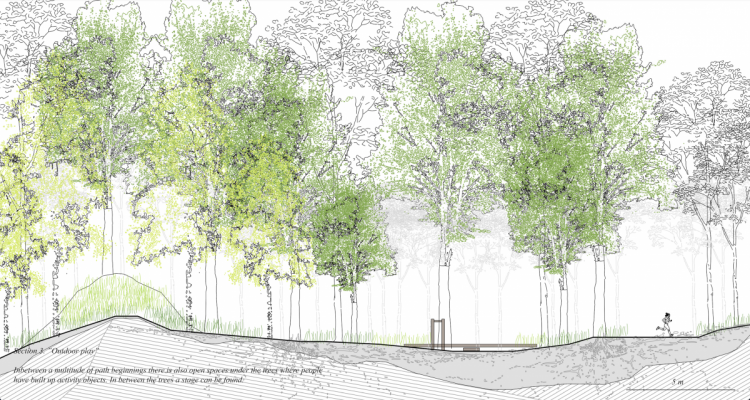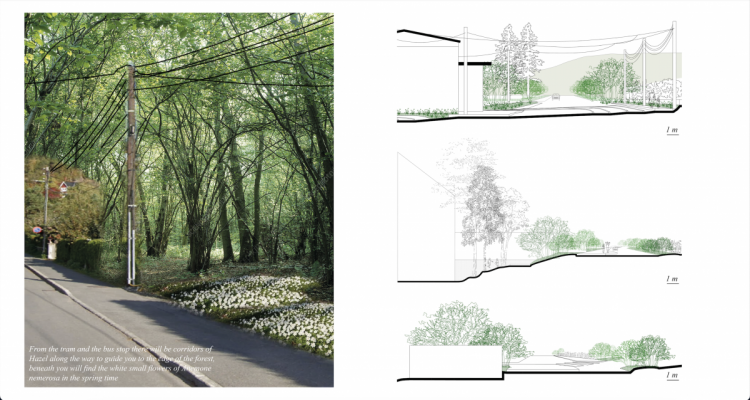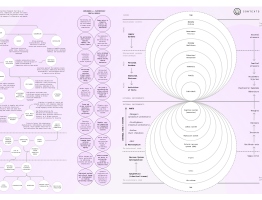Diplomprosjekt
Høst 2023
Institutt for urbanisme og landskap
Retracing the Marka Border is a project which aims to revitalize and bring new focus to the Marka Border, which for the last years has experienced a lack of focus. The border is today lacking entity, as housing and infrastructure has eaten into the natural edge. This results in varied edge conditions and insufficient protection for the natural forest. Just the last year there have emerged a new interest in Norwegian media for forests which underscores the need for more proactive measures. With the time we are living in and the urge for nature reserve, area neutrality and nature restoration this makes us have to take into action new methods. The Oslo municipality has just given Marka new focus again and wants to make Marka more accessible also to elderly, disabled and minority cultures. This is a goal which will need an attention to new solutions.
In this diploma I have therefore decided to have three main topics: Edges, paths and entrances. The aim is to address the natural state, propose solutions for more accessible paths and create a more distinct forest entrance experience.
The lack of nature protection comes from the lack of a functioning buffer zone, as the city has grown into its limitations and an edge is barely existing. By wearing out and overusing these areas we could in many ways describe the forest as having gotten the condition of “edge sickness”. By proposing more” edges” along the border a natural protection will emerge. This is a proposal that addresses the urge of more coherent vegetational patterns with a vegetation solution. Three edges or transitions will be created: one outer one with dense shrubs, one intermediate edge with deciduous species and a deeper edge merging into the existing Marka forest. As infrastructure has done its dig as close to the border as possible it is only possible to propose this inside the Marka, but the need for a stronger edge is necessary either it takes area from the suburbs or the existing forest edge.

There are about 1.5 million people that has the Oslo Marka as their closest nature, and most of them are living in Oslo. This diploma focuses on the part of the border which is in contact with Oslo centrum and is both easily reachable and heavily pressured (ca 10 km from Vettakollen in the west to Ammerud in the east). The area concern mostly Nordmarka and Lillomarka. The high number of forests and their proximity to the city makes Oslo unique compared to other capitals with a total coverage of 68 % being forests. To many Oslo citizens it’s a prices possession, and many have a close personal relation to their neighboring forests. Still there has been found that it is mostly only the people growing up with outdoor activities that actually facilitates it, and that for many elderly, poor or minorities which are not used to walking in “wild” nature the Marka can feel quite unreachable. When speaking to the municipality of Oslo it became clear that they are now looking into what can be made of the exciting path networks to make them also facilitate for the less experienced hiker. Proposing shorter looped routes will simplify the experience of the forest and may bring more people in to the experience of walking inside a forest. I am proposing a sort of “weaving” in the intermediate edge, as it is both close to the city and functioning as a buffer so that heavily used walks will stay along the edge. The weaving will provide a network of loops along the edge at the same time as being in contact with the existing entrances and main routes.

The last aspect I will introduce in this diploma is the entrance “portals” or gates. By going on site visits and photographing many of them, it is becoming clear that the majority lack a sensation of “nature”. The high percentage of asphalt and roadblocks shows that these have been designed mainly with the view that cars shall not pass. The possibilities of improvement along these gates are great if looked upon with a landscape understanding and reading. In 2021 the Oslo municipality upgraded and created a sort of forest park at the entrance of Sognsvann to better enhance the entrance feeling into Marka. The reprofiling drew a new focus to the area and the Marka as a more reachable destination also for the less experienced hikers. In a report about immigrant women´s use of public spaces it comes through that Sognsvann is one of the only destinations within Marka they reach out to. The improvement done to Sognsvann proved very successful and shows how popular the forest is to people if it is facilitated for. I am proposing a retake on a number of existing entrances - either because their proximity to public transport, important hiking tracks or hold a lot of possible space for entrance forest “parks”.
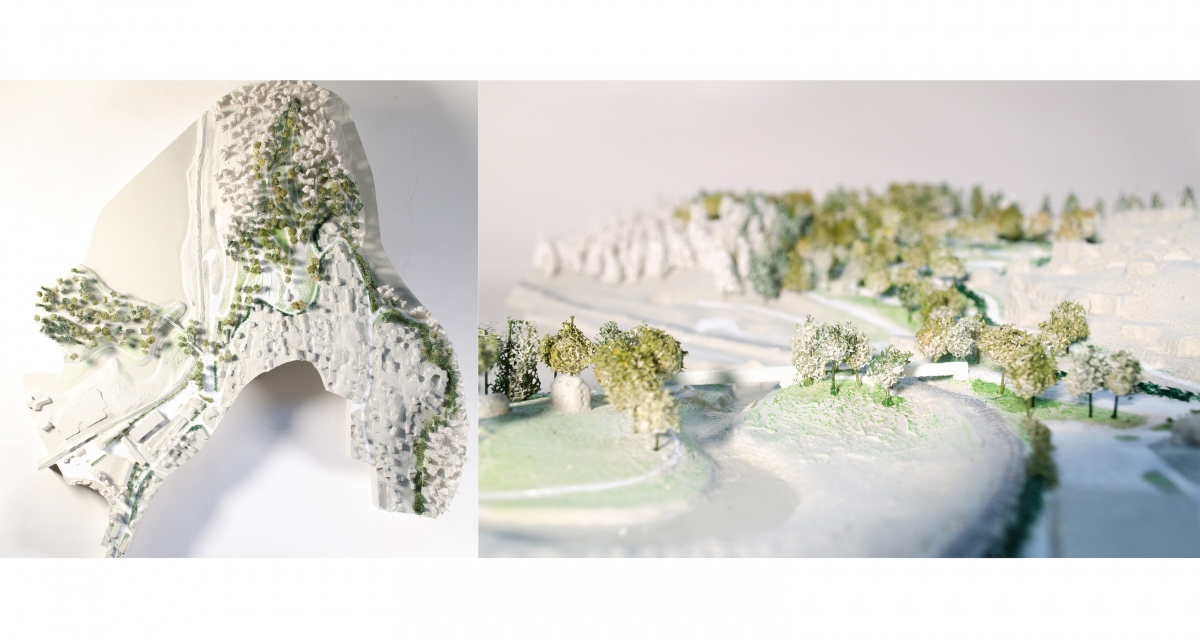
When looking to Maridalsvannet I saw that it held certain similar qualities to the area of Sognsvann. The location is just like Sognsvann close to centrum and well-connected with public transport as bus, train and tram (at Sognsvann its metro). Maridalsvannet lies quite high in the landscape looking over Oslo from the plateaus of Kjelsås. On the dam of Maridalsvannet there is today an abrupt stop as water treatment facilities interrupts the edge. Hikers are today obliged to walk through the building site of the water treatment if they wish to cross the Akerselva river which abrupts the forest feeling. By proposing two smaller bridges lower down the river hikers can follow a more correlating line from the low valley of the river to the high panorama on the top of Kjelsås. The three edges are dressed up with hazel (Corylus avellana) in the outer edges and a mix of deciduous trees in the intermediate edge, where both sides of the river get connected. The high number of spruce forests in Nordmarka is typical of Norway but not necessarily as “natural” as many think. A hundred years ago these edges along the Marka were a more mixed forests but with the industrialization and foresty politics much spruce has been planted to cover wood and coal supplies. Now with the climate change and nature crisis emerging we see the value of the deciduous trees again as they often host rich biodiversity and will handle warmth and wetter climates well. The idea is to introduce more trees like Populus, Sorbus, Betula, Quercus and Carpinus as well as Tilia, Fagus and Alnus.

In conclusion, Retracing the Marka border seeks to re-enhance the highly valuable Marka edge by ensuring its accessibility, ecological sustainability, and cultural significance for all Oslo citizens.

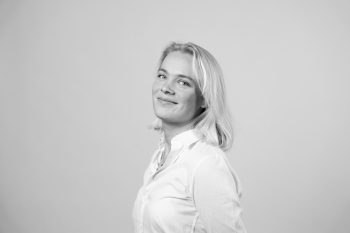
Amanda Ellisif Arnesen / amanda.ellisif.arnesen@stud.aho.no / +47 47 36 32 60
In this diploma I have therefore decided to have three main topics: Edges, paths and entrances. The aim is to address the natural state, propose solutions for more accessible paths and create a more distinct forest entrance experience.
The lack of nature protection comes from the lack of a functioning buffer zone, as the city has grown into its limitations and an edge is barely existing. By wearing out and overusing these areas we could in many ways describe the forest as having gotten the condition of “edge sickness”. By proposing more” edges” along the border a natural protection will emerge. This is a proposal that addresses the urge of more coherent vegetational patterns with a vegetation solution. Three edges or transitions will be created: one outer one with dense shrubs, one intermediate edge with deciduous species and a deeper edge merging into the existing Marka forest. As infrastructure has done its dig as close to the border as possible it is only possible to propose this inside the Marka, but the need for a stronger edge is necessary either it takes area from the suburbs or the existing forest edge.

There are about 1.5 million people that has the Oslo Marka as their closest nature, and most of them are living in Oslo. This diploma focuses on the part of the border which is in contact with Oslo centrum and is both easily reachable and heavily pressured (ca 10 km from Vettakollen in the west to Ammerud in the east). The area concern mostly Nordmarka and Lillomarka. The high number of forests and their proximity to the city makes Oslo unique compared to other capitals with a total coverage of 68 % being forests. To many Oslo citizens it’s a prices possession, and many have a close personal relation to their neighboring forests. Still there has been found that it is mostly only the people growing up with outdoor activities that actually facilitates it, and that for many elderly, poor or minorities which are not used to walking in “wild” nature the Marka can feel quite unreachable. When speaking to the municipality of Oslo it became clear that they are now looking into what can be made of the exciting path networks to make them also facilitate for the less experienced hiker. Proposing shorter looped routes will simplify the experience of the forest and may bring more people in to the experience of walking inside a forest. I am proposing a sort of “weaving” in the intermediate edge, as it is both close to the city and functioning as a buffer so that heavily used walks will stay along the edge. The weaving will provide a network of loops along the edge at the same time as being in contact with the existing entrances and main routes.

The last aspect I will introduce in this diploma is the entrance “portals” or gates. By going on site visits and photographing many of them, it is becoming clear that the majority lack a sensation of “nature”. The high percentage of asphalt and roadblocks shows that these have been designed mainly with the view that cars shall not pass. The possibilities of improvement along these gates are great if looked upon with a landscape understanding and reading. In 2021 the Oslo municipality upgraded and created a sort of forest park at the entrance of Sognsvann to better enhance the entrance feeling into Marka. The reprofiling drew a new focus to the area and the Marka as a more reachable destination also for the less experienced hikers. In a report about immigrant women´s use of public spaces it comes through that Sognsvann is one of the only destinations within Marka they reach out to. The improvement done to Sognsvann proved very successful and shows how popular the forest is to people if it is facilitated for. I am proposing a retake on a number of existing entrances - either because their proximity to public transport, important hiking tracks or hold a lot of possible space for entrance forest “parks”.

When looking to Maridalsvannet I saw that it held certain similar qualities to the area of Sognsvann. The location is just like Sognsvann close to centrum and well-connected with public transport as bus, train and tram (at Sognsvann its metro). Maridalsvannet lies quite high in the landscape looking over Oslo from the plateaus of Kjelsås. On the dam of Maridalsvannet there is today an abrupt stop as water treatment facilities interrupts the edge. Hikers are today obliged to walk through the building site of the water treatment if they wish to cross the Akerselva river which abrupts the forest feeling. By proposing two smaller bridges lower down the river hikers can follow a more correlating line from the low valley of the river to the high panorama on the top of Kjelsås. The three edges are dressed up with hazel (Corylus avellana) in the outer edges and a mix of deciduous trees in the intermediate edge, where both sides of the river get connected. The high number of spruce forests in Nordmarka is typical of Norway but not necessarily as “natural” as many think. A hundred years ago these edges along the Marka were a more mixed forests but with the industrialization and foresty politics much spruce has been planted to cover wood and coal supplies. Now with the climate change and nature crisis emerging we see the value of the deciduous trees again as they often host rich biodiversity and will handle warmth and wetter climates well. The idea is to introduce more trees like Populus, Sorbus, Betula, Quercus and Carpinus as well as Tilia, Fagus and Alnus.

In conclusion, Retracing the Marka border seeks to re-enhance the highly valuable Marka edge by ensuring its accessibility, ecological sustainability, and cultural significance for all Oslo citizens.


Amanda Ellisif Arnesen / amanda.ellisif.arnesen@stud.aho.no / +47 47 36 32 60
